Blog
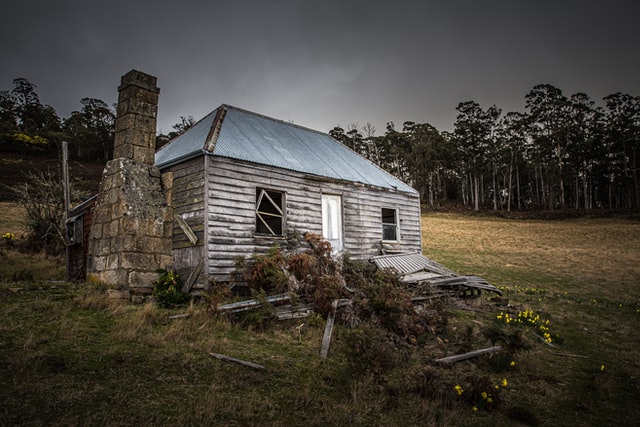
How to Protect Your Home from North Idaho Disasters
Homes in Northern Idaho can be susceptible to damage caused by the state’s temperamental weather. In late spring and early summer, thunderstorms sweep through the area. With strong winds and heavy rains, floods, broken windows, and falling trees pose a threat to your safety. Hot, dry summers can also yield lightning storms that can quickly cause wildfires. If you want to avoid having to pay the time and money for disaster cleanup services, then you’ll want to take extra measures now to help protect your home from disasters.
Protection from Floods
There are many ways to keep your home and valuables safe during flood conditions. Several disaster relief organizations and home improvement shops can provide you with sandbags. Place them around your doors, windows, and other points of entry. They can stop both water and loosened soil from getting into your home. You can also call a home restoration company to add extra sealants to these areas and check for any weak points in your home’s structure that could possibly lead to flooding.
Prevention of water in your home is ideal, but if you can’t stop the water from getting in, there are some steps you can take to minimize the impact of the water damage. You can install or upgrade a sub-pump in your basement to help redirect water as soon as it gets in. To protect your valuables, be sure to store items in plastic bins and keep them as high off the ground as possible. If your home is prone to flooding, you may want to consider storing your valuables in another part of the house altogether.
Protection from High Winds
Floods can be frustrating to deal with but aren’t necessarily as dangerous or harmful as high winds. Not only can trees near your house fall, but any loose debris can be swept against your house, breaking windows, doors, roofs, and sidings. If you know a strong storm is going to be passing your home, consider taping and boarding up your doors and windows. You’ll still have to deal with the broken glass after, but this can prevent things getting into your home in the meantime.
Protection from Fire
Unfortunately, there’s not as much that can be done to protect your home against fires. The best way to protect your home is to stay aware of the conditions. Also, store any valuables in fire safety boxes, and listen to the advice of local authorities. Fire situations can change and grow quickly, so being aware is key.
If you want to protect your North Idaho home from disasters (or need disaster cleanup services after a storm or fire), then call Insight Restoration at (208) 427-2825. Our team can help with disaster prevention and cleanup. We are available 24/7 to respond to any emergency situation at any time.
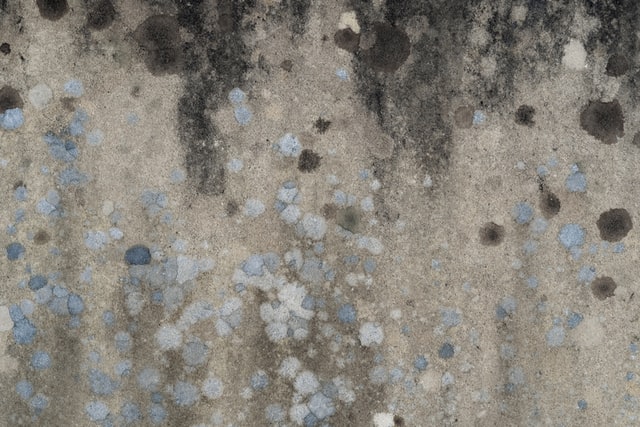
Why You Shouldn’t Leave Mold Untreated in Northern Idaho
There’s no argument that mold is a bad sign. Mold is often a lasting result of water damage, as it thrives in moist environments. Mold is a stubborn foe that won’t easily leave. If left untreated, mold can cause serious health concerns in your family and damage to your home. It’s never recommended to try and remove mold on your own, as it can cause serious allergic reactions and even infections. If you find or suspect mold, here’s why you need professional mold removal and remediation services as soon as possible.
Health and Safety
The most dangerous aspect of mold is the threat to your health and safety. Mold is a highly toxic fungus. Breathing in mold spores can cause severe allergic reactions such as a runny nose, scratchy throat, and watery eyes. Breathing mold in for too long can even begin to damage your lungs, sometimes permanently. Mold spores aren’t usually big and often aren’t visible at all to the naked eye. You can breathe in mold even when you can’t see it.
Mold surfaces are also very toxic. Even with the proper equipment, handling mold puts you at risk of infection. Some mold species can cause irritation and infection of the skin as soon as you touch them. It’s always recommended to hire a professional mold removal and remediation specialist. A professional will be properly trained and certified in handling mold, and can remove it from your home safely and effectively.
Foundation Damage
Mold is dangerous to the surfaces it grows on. Your home’s health is also at risk when mold is left untreated. Mold will eat away at the surface it grows on and can spread fairly quickly over time. If left on its own, mold can cause severe issues with your home’s foundation and overall visual appeal.
Wood is particularly susceptible to mold degeneration. If hidden behind a wall or under a floor, mold on your home’s foundation is more likely to go unnoticed. However, this can cause even worse damage to your home, weakening its overall structure. It may seem like it’s easy enough to ignore foundation-level mold, but removing it as soon as possible will save you time and money in the long run.
Finding mold in your home is a frustrating time. It’s important to remember to never try and remove the mold by yourself, as this could lead to health concerns and infection. Always hire a professional mold removal and remediation specialist to handle the mold for you. The technicians at Insight Restoration are fully trained and certified to remove mold quickly and effectively from your home. If you find or even suspect mold in your house, don’t hesitate to call us at (208) 427-2962. Our phones are open 24/7, and we’ll get a mold specialist out to your home as soon as possible to begin the removal and remediation process.
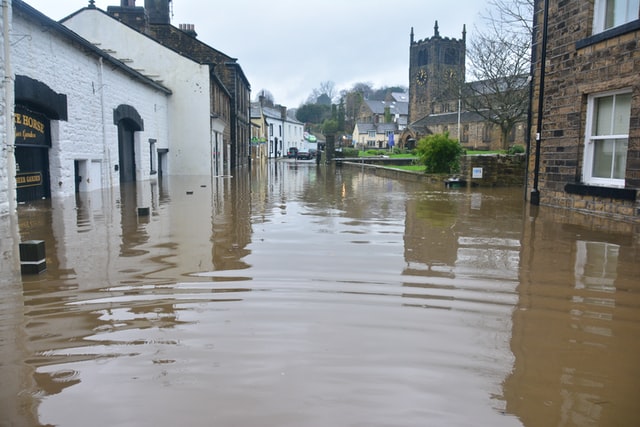
How to Deal with a Flooding Basement
Floods are a frustrating situation that can cause a lot of damage. The process usually begins with basement water removal, but there are so many other things to consider it can be hard to keep track of it all. If you’re feeling overwhelmed by a recent basement flood, know that you are not alone. Many homeowners struggle with the cleanup and repair of a flooded basement, but there are ways to help mitigate the damages and frustrations.
Act Fast
The most important step in dealing with a flooded basement is to act fast. Water damages increase significantly the longer they are left to sit. Even a small flood can cause serious issues if not handled quickly. Removing the water from the basement and beginning the drying processes as soon as possible could help prevent mold, structural damages, and electrical issues. The longer you wait to act with a flood, the more damage your home could sustain.
As soon as you notice your basement is flooded, call the professionals to have the water removed and the drying process started. Floodwaters often carry high levels of bacteria and other toxins from outside, and it’s not a good idea to try and clean it up on your own. A trained, certified technician will be able to remove the water safely and inspect the area for any mold or other hazardous conditions.
Take Note of the Damages
Before you call your insurance company to file a claim, make a detailed report of the damages caused. Your technician will be able to provide you with a full, itemized inspection report detailing the severity of the damages and the cost estimate to fix them. Taking pictures or videos of the damages, where safe to do so, will also help your claim be processed faster. Finally, make a list of any insured items that were damaged in the flood.
Prevent Future Floods
Once the cleanup and restoration of a flood are finished, it’s easier to breathe again – but that doesn’t mean the work is over. If a basement floods once, it’s likely to flood again. Taking the steps to shore up your basement’s defenses after a flood can help prevent damage in the future. Sometimes the fix is as simple as adding additional sealant to your walls. Other times, you may need to install a new sub-pump to help control the flood damage. No matter the fix, always assume another flood is possible. Store all valuables in plastic tubs to prevent water damage in the future.
If your home has experienced a flood, you need professional help with basement water removal. Insight Restoration is available 24/7 at 208-427-2962 to respond to any emergency flooding, day or night. Don’t let a flood ruin your home or put your family’s health at risk. Act fast and let our trained and certified technicians clean and restore your basement and provide additional preventive services if needed.
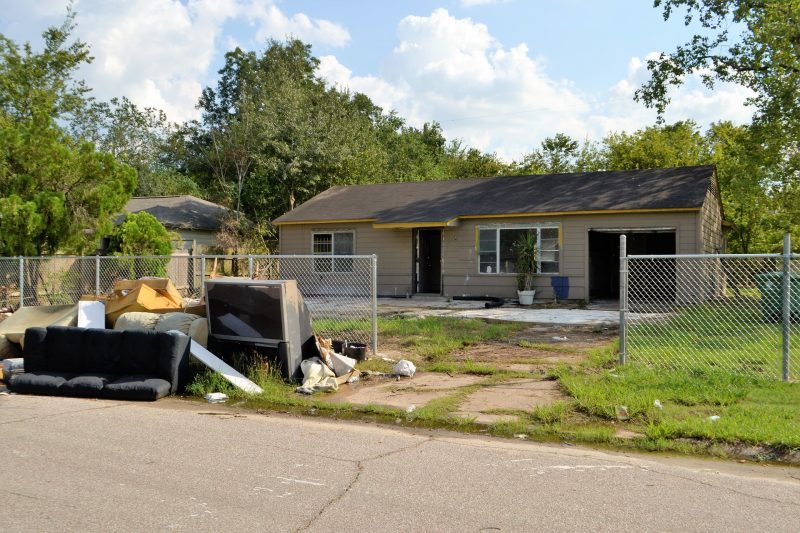
How Water Can Damage Your Home
Water may not initially seem like a big threat. But the truth is that water can cause more damage to your home than any other source. Water is what we need most to survive, but it can destroy our homes if not taken care of quickly and properly. Water damage is more than just wet books or stains on walls. It can be hazardous to your home and your health. Here is how water can damage your home in ways you might not have considered.
Structural Damage
Water is particularly harmful to wood, especially the longer the wood is submerged. As wood absorbs water, it becomes soft and easily broken apart. If you have water damage, you could face serious structural issues in any wooden supports found in the area. Even if the wood is dried out, the damages can continue to linger beneath the surface.
Water-logged wood is also a prime target for termites and other pests. Bugs eating away at the wood will only weaken the structure more. It’s always a good idea to have the structural integrity of your home inspected after discovering a leak or flood. You may need to have parts replaced or bugs exterminated to keep your home safe and sound.
Electrical Hazards
Water and electricity don’t mix. Usually, great care is taken to ensure that pipes and electrical cords are run apart from each other. However, leaks can still drip down onto wires and floods can reach up to electrical outlets. If there’s been a leak or flood in your home, any use of an electrical appliance could result in injury. Always have your home’s electrical system inspected and repaired to avoid any unwanted shocks or power surges.
Mold
As possibly the most dangerous side effect of water, mold can cause serious health issues for you and your family. Mold thrives in wet environments, and some types survive well in either cold or hot areas. When there’s water damage in your home, mold will likely follow, especially if the water isn’t extracted immediately.
Mold is usually easily identifiable. Most molds carry a musty scent and have visible fungus growths. If you continue to smell mustiness after an area has been restored, it’s a good idea to get your home inspected for mold. As much damage as water can leave behind, mold is even more dangerous to let sit around your home.
Even though water is usually harmless in most cases, when it leaks or floods into your home, it can cause serious damage. Water damages your home’s structure and electrics and can invite unwelcome guests such as mold and termites into your home. So if you’ve experienced water damage in your house, call Insight Restoration today at 208-427-2534. Our team of certified technicians is standing by 24/7 to respond immediately to any water crisis. We’ll get the water extracted and provide an inspection to assess any damage caused so we can get your home back to perfect working order.
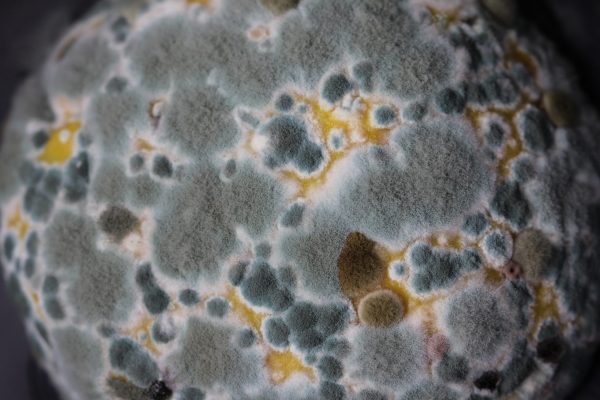
Know Your Mold
Mold is one of the most frustrating and concerning finds in your house. Finding mold usually means there’s another issue, such as a leaky pipe or improper ventilation. Mold can be dangerous if left untreated. It can also lead to health problems for you and your family down the road. Proper mold identification helps you better understand the threat your home faces and can help you find a qualified mold removal technician to deal with the problem. Here are some of the common house molds you may find and how to identify them.
Acremonium
Acremonium is a highly toxic mold that usually turns into a pink, grey, orange, or white powder. It thrives in moist areas such as drain pans, humidifiers, and even window sealants. Acremonium is commonly found alongside black mold and other toxic molds, so be on the lookout for other hazards.
Alternaria
Alternaria is an allergenic mold that causes coughing, runny noses, and watery eyes. It’s a common bathroom mold in bathtubs or showers and usually indicates water damage. It spreads quickly and has a velvety texture. Alternaria also sprouts dark green or sometimes brown hairs on its surface.
Aspergillus
Like Alternaria, Aspergillus is a common allergenic mold. However, it carries more of a toxic threat than Alternaria. There are over 185 variants of Aspergillus, but you can usually identify it by the spores, which are long and shaped like flasks.
Aureobasidium
Another allergy-causing mold, aureobasidium starts as either pink or brown but turns darker over time. It’s often found on wooden surfaces and can lead to infection if it comes in direct contact with skin.
Chaetomium
Chaetomium has a cotton-like texture and thrives in areas with severe water damage. This mold has a noticeable musty odor and turns from white or grey to black as it ages. Chaetomium can also lead to infection if touched.
Cladosporium
A suede-textured mold, cladosporium often causes severe allergic reactions such as respiratory issues and is most often discovered in home fabrics and carpets. It is typically olive green or brown.
Fusarium
Fusarium grows on food and can spread quickly. Pink, white, or red in color, fusarium can cause severe damage to the nervous system if ingested.
Mucor
Mucor grows in thick, white patches. It often grows in air conditioning units or damp carpeted areas. Mucor has the threat of fungal infection if not dealt with swiftly.
Penicillium
Like alternaria, penicillium has a velvety texture, but it usually appears in a blue-green color. The spores of penicillium can quickly travel through the air in your home and cause allergy or asthma-like reactions. You can commonly find it in wallpaper and mattresses.
Stachybotrys
Also known as black mold, stachybotrys is a slimy, dark green or black mold with highly toxic qualities. It grows in damp and humid areas.
Trichoderma
Trichoderma is a white mold that commonly has green patches with wooly textures. It typically grows in areas with built-up condensation, like air conditioning filters or wallpapers.
Whenever you discover mold, it’s important not to disturb it or try to remove it without professional help. Call Insight Restoration at (208) 427-3042 to have a professional mold removal specialist identify and remove your home’s mold.
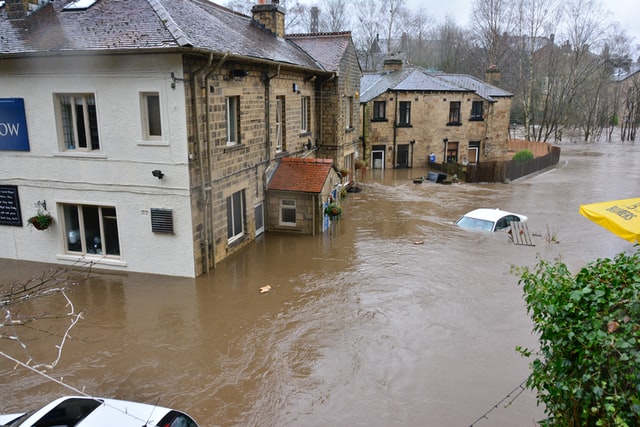
First Steps after a House Flood
Water can cause a lot of damage to your home if not taken care of quickly. Discovering flood damage in your home can cause chaos in your life, but taking care of it as soon as possible can save you time and money later on. Taking care of your house after a flood requires a few steps on your end before a restoration company gets there. Although it can be a lot to handle, taking the time to clean up after a flood is vital to keeping your home secure.
Water Extraction
Depending on the scale of the flood, extracting the water from the area is usually the first step. If there’s too much water in the room, any other kind of cleaning or restoration is nearly impossible to accomplish. Chances are, if your room floods, there’s already an issue with drainage, so it can take a while for the water to subside.
Most restoration companies offer water extraction as part of their flood clean-up packages. There are some tools you can purchase if you want to remove the water yourself. Installing a sump pump in your basement is also an excellent way to help remove water after a flood.
Flood Damage Identification
After the area is clear of water, the next thing you’ll want to do is go through and identify what was damaged in the flood. Most homeowner’s or renter’s insurance covers flood damage in their policies. In order to get reimbursement, you’ll need to know exactly what was damaged and how much it will cost to replace.
Take stock of valuables that were damaged in the flood. You’ll also want to have an inspection done to see if there was any structural damage to your home. Most insurance policies will cover the cost of repairs as long as the damage can be linked to the flood. Keep any receipts from water extraction or repairs as well.
Restoration Preparation
After you’ve made note of what’s been damaged, it’s time to get the area ready for restoration. Airing out the room, if possible, and running fans can help dry out excess water and prepare the space for repair. Keeping the room quarantined from the rest of the house will stop any damage from spreading to other areas.
Cleaning the room out can also help the restoration process. Move furniture and boxes to another area (or let them sit outside if it’s not raining). This is especially important if you have carpets. Carpets need to have the space to dry out properly. Giving your restoration company more room to work ensures the work goes quickly and effectively.
When your home floods, you need to act fast to prevent further damage. Removing water from the area and cleaning out the room can help restoration go smoothly. Insight Restoration’s certified technicians are ready to help you 24/7. If your home recently experienced flood damage, call us today at 208-427-3042. We’ll get your home back in perfect condition quickly and efficiently.
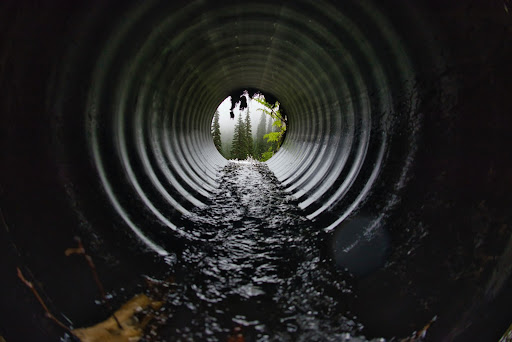
Why You Shouldn’t Leave a Sewer Backed Up
Dealing with a sewage backup is never pretty. But leaving a sewer backed up is even less pleasing. A backed-up sewer can lead to a whole slew of problems if left undrained. Although paying to drain a sewer or getting dirty draining it yourself isn’t ideal, it’s better than the alternative. Draining a backed-up sewer is not something that should be put off, and here are the main reasons why.
Disease
Sewage is unpleasant for a reason. All kinds of bacteria and viruses thrive in the environment sewage provides. Your backed-up sewer can host e. Coli, salmonella, and even hepatitis. In fact, according to The National Resources Defense Council, an average of two million illnesses are the result of sewage contamination.
A backed-up sewer doesn’t stay contained to your pipes. Without proper draining, sewage can leak back into your home, infecting your sinks and tubs with harmful bacteria. Leaving your sewer backed up puts you, your family, and your neighbors at risk of serious injury.
Additional Home Damage
Leaving a sewer backed up doesn’t just increase the risk of disease. Pipes need proper drainage to function, and without it, you could be facing costly home repairs. If your sewer is backed up, every time you turn on a faucet or flush a toilet, you run the risk of causing your pipes to crack or burst from the pressure. Also, without anywhere else to go, water that can’t drain through your pipes can spill back into your home, causing water damage.
Sewage problems can even affect your lawn, causing the grass to die and tree roots to become diseased. So, even though paying to drain your sewer, or spending the day doing it yourself, may seem costly, the cost of repairs for the additional damage a backed-up sewer can cause is almost always more. So be proactive and get your sewage drained before it causes more problems.
Sight and Smell
Waste trying to flow through a backed-up pipe needs somewhere to go. Unfortunately, that place is in your home or yard. Sewage can leak out of pipes in your home or under your lawn, leaving a thoroughly unpleasant sight and scent. And if the sewage is leaking into your yard, it’s not only you that has to be subject to the odor. Leaving your sewer backed up influences everyone that lives on your street. And if you have a homeowner’s association or similar group regulating your neighborhood, you could be looking at additional fines for your sewage problems.
If your home has a backed-up sewage problem, don’t hesitate to get it drained. Insight Restoration can remove the blockage from your sewer and put preventative measures in place to keep your sewer clog-free in the future. Give us a call at 208-427-2962 to discuss your sewage cleaning needs. Our certified technicians are available 24 hours a day, seven days a week, to take your call and help with your restoration.
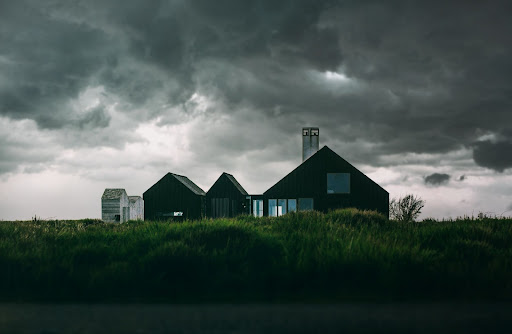
How to Protect Your Home from a Storm
Storms bring several hazardous conditions to your home, from strong winds to flooding and even the risk of electrical issues. Insight Restoration can help repair your home from storm damage, but prevention is key. Here are some ways you can protect your home if you know a storm is on the way.
Pre-Repair
An already damaged home is more susceptible to additional storm damage. Loose shingles and siding can more easily be ripped away in a strong gust, and missing ones let in rain and snow. Getting your roof and siding repaired or replaced ensures that your home has the structural integrity to withstand more storms.
Also, clear out your gutters to prevent any water backing up from heavy rain. And make sure your sump pump is functioning in case of flooding. Finally, check for any loose or untethered yard supplies, such as fences or tree branches. If you want your home to survive a storm, make sure it’s in tip-top condition before the storm comes around.
Add Additional Support
A strong home is a good starting point, but adding additional safety measures will keep it sturdy. Board up your windows to protect the inside of your house from broken glass, rain, and any wind-swept objects. This is especially crucial if you are staying in your home during the storm, as unprotected windows can cause serious injuries to you and your family.
Sandbags are a great way to prevent flooding, and most local municipalities offer them before a storm, especially in locations where hurricanes and tornadoes are most common. Placing sandbags around your outside doors and low windows will divert flooding from your house. You’ll especially want to get sandbags if your home doesn’t have a sump pump or it’s not in working order.
Double-Check Security and Hazard Alarms
Storms cause more than just flooding. Strong winds and lightning can knock out power or even start fires. Making sure your security features are current and functioning is vital to keeping you and your house protected.
A lot of fire alarms and other hazard detectors run on electricity, so having battery-powered backups with fresh batteries can save you and your home in case of a power outage. It’s essential to have a working carbon monoxide detector during a storm if you are using a generator to keep home essentials running. Generators produce carbon monoxide, and if you have everything boarded up to prevent flooding, you’ll want advance notice if the CO2 levels are getting too high in your house.
A decent-sized storm can wreak havoc on your life and your property. With proper prevention, you can reduce the damage that these storms cause. But not all damage can be avoided. If your home has recently suffered through a storm in North Idaho’s Bonner, Boundary, and Kootenai Counties, call Insight Restoration today at (208) 427-2825 for a fast response and quality storm damage cleanup and restoration.
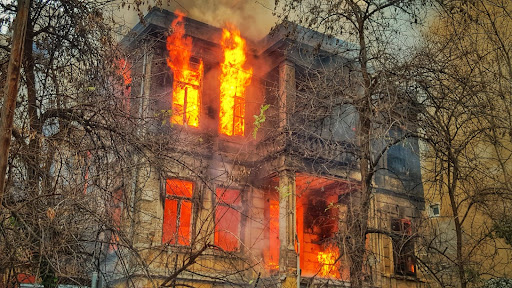
First Steps After a House Fire
Experiencing a house fire is terrifying, and facing the aftermath of it is daunting. There’s a lot that can happen to your house because of fire damage, no matter how small or contained the fire was. Being proactive in your approach after a fire is the best way to ensure you have a speedy and painless restoration, and one that’s hopefully covered by your insurance. By completing the following steps as soon as possible, you’ll help your house recover from a fire as if it never happened.
Get a Copy of the Fire Report and Have Your Home Inspected
When firefighters put out a fire, they always make a detailed report. The report includes the size and severity of the fire, the location of the fire, and the initial survey of the damage caused. You can call your local fire department for this information.
Afterward, you’ll want to have your home properly inspected. Firefighters are trained to put out fires, not necessarily to catalog all the damage. Your local fire department will provide you with a list of qualified inspectors, but you can also get an inspection and report from a fire restoration company that will provide a quote on how much it will cost to restore your home.
Contact Your Insurance Company
After you have the initial reports and inspections on your home, call your insurance company to report the file and open a claim. With all the information on hand before you call, you’ll be able to expedite the process and get answers about your policy faster. Most insurance companies cover house fires no matter the cause, but the amount paid out may differ.
If you’re unsure about what your policy covers, call your insurance adjuster before the inspection. There may be specific things you’ll need to have examined to help support your claim.
Protect Your Home
Depending on the scale of the fire damage, you may need to take extra precautions to keep your home safe after a fire, especially if you can’t stay in the house during repairs. There are several ways your house can be exposed to further damage after a fire, so any broken windows or other destroyed openings to your home should be boarded up and covered. This will keep out unwanted guests and environmental hazards such as rain or snow. You can also call your local police department and ask them to check on the house periodically.
Protecting your home also includes proactively getting ahead of the damage caused by the fire before repairs begin. Keeping windows and doors open while you’re on the site will help clear out any smoke damage, and the fresh air and cross breeze can help keep on top of water damage from the fire department’s hoses.
When your house sustains any kind of damage, restoring it can be a hassle. But if you stay on top of the work and gather all the information you need ahead of time, you can breeze through the insurance process and get started on repairs sooner. If your home was recently damaged in a fire, call Insight Restoration today at (208) 427-3042. Our certified and experienced technicians are ready to help you get your home back to working condition.
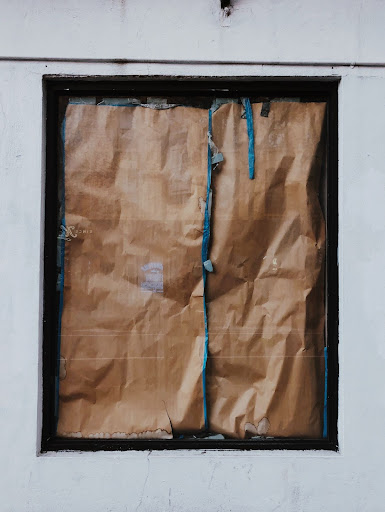
Steps to Keep Your Home Safe While Saving for Repairs
Home repairs can be expensive, both in time and money. But the longer your home goes without repair, the more damage it’s likely to sustain. Insight Restoration is available 24/7 to help you with repairs, but you may not always be able to fix your home up right away. There are a few steps you can take to prevent further damage to your home and help make tarp and board clean-up a breeze.
Board Up and Use Tarps
The best way to protect your home while saving or waiting for repairs is to utilize boards and tarps for external damage. Smashed windows can be remedied with plastic and tape. Carefully remove any shards of glass and then cover the window with a sheet of plastic, using tape to secure the edges. Test the hold with a hose first to make sure the seal is tight enough to prevent leaking. If you live in a particularly cold area, use layers of bubble wrap between the plastic and the window to help with insulation. Smaller cracks can be temporarily fixed with glue or clear nail polish.
More extensive breaks may need to be tarped or boarded up with wood. Larger openings in the side of your house can be temporarily fixed with plywood, nailed down to prevent strong winds from adding more damage. A tarp between the wood and the wall will also help prevent water and other environmental hazards from getting in. Tarps and boards can also be used on your roof to prevent further damage caused by missing or loose shingles.
Take Notes for Insurance
Even if you have homeowners’ or renters’ insurance, it can take a while for your claim to go through and even longer to get the money you need to make repairs. Keeping a detailed list of the damages in your home and yard will help the process move along. Depending on your policy, insurance may even cover damages that accumulate because of repair time.
When waiting to get your home repaired, take pictures of the damages you find as soon as you find them. For each one, make a note of what the damage is, how extensive, and when it was noted. Damages that are related to the initial problem could be covered, even if they were found days or weeks after the incident.
Waiting for time or money to repair your home can lead to further damage, but by properly boarding up and utilizing tarps, you can lessen its impact on your house. Keeping detailed notes with photos for insurance can also help reimburse you for damages incurred while waiting.
If you need home repairs or materials, call Insight Restoration at (208) 427-2962 for quick and reliable service. And when our certified and experienced technicians finish repairing your home, we can even help with a quick and easy tarp and board clean-up.

